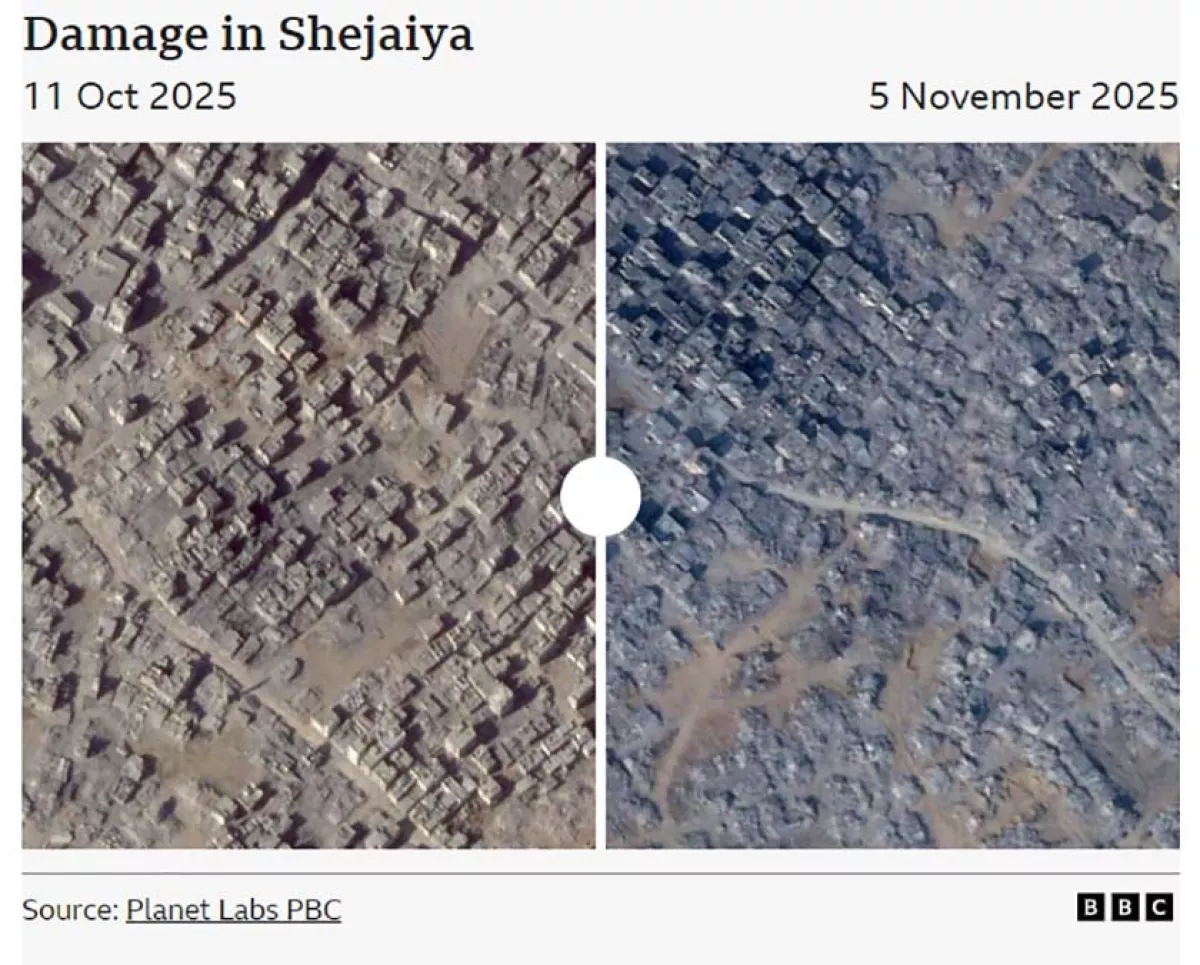BBC: Israel flattens entire neighbourhoods of Gaza after ceasefire PHOTO
Israel has razed entire neighborhoods in Gaza, demolishing more than 1,500 buildings in areas under its control since the ceasefire with Hamas began on October 10.
This is evidenced by satellite images reviewed by the BBC, which show that entire districts controlled by the Israel Defense Forces (IDF) were wiped out in less than a month — apparently through the demolition of buildings, Caliber.Az reports.
The actual number of destroyed structures may be significantly higher, as satellite imagery for some areas was unavailable for BBC Verify’s assessment.
Some experts argue that the demolitions could violate the terms of the ceasefire brokered by the United States, Egypt, Qatar, and Türkiye.
However, an IDF spokesperson told BBC Verify that the army is acting “in accordance with the conditions of the ceasefire.”

Satellite images analysed by the BBC and Planet Labs PBC reveal large-scale destruction in districts east of Rafah and Khan Younis, as well as in the Shujaiya area of Gaza.
In several locations, entire residential blocks that had remained relatively intact before the ceasefire were later completely levelled.
The IDF justified its actions, stating that under the ceasefire terms, all terrorist infrastructure, including tunnels, must be dismantled across Gaza.
“Israel is acting in response to threats, violations, and terror infrastructure,” a military spokesperson said.
Earlier, on October 18, Defence Minister Israel Katz wrote on X that the “demilitarization of Gaza by destroying the terror tunnels and all terror infrastructure” was a core element of Israel’s security policy.
Meanwhile, Point 13 of Trump’s peace plan, published by the White House and considered the closest reference to the ceasefire terms, stipulates that all “military, terror, and offensive infrastructure, including tunnels and weapon production facilities, will be destroyed and not rebuilt.”
However, it also specifies that Gaza’s demilitarisation should take place “under the supervision of independent monitors.”
By Jeyhun Aghazada








